Daimler adds Geely as major investor for electrification: Li Shufu, the chairman and main owner of Chinese carmaker Geely, has taken a 9.69% stake in Daimler AG, the German company said in a regulatory filing last week. The $9 billion in Daimler shares makes Li the largest single shareholder in the 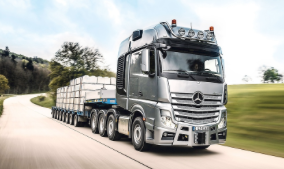 manufacturer of Mercedes Benz cars, trucks, and vans. Sources told Reuters that Geely’s main objective in the Daimler investment is sharing its EV technology to meet China’s demand for new energy vehicles. Zhejiang Geely, which owns Volvo, in December invested $3.9 billion in Volvo AB, the world’s second-largest truck maker after No. 1, Daimler Trucks. The Chinese company has also invested in Via Motors and an electric truck joint venture for China. Daimler has made comments about preparing to be the world’s leader in electrified trucks in the medium-duty and heavy-duty truck segments. Last week, the company released details on its eActros heavy-duty trucks still in development. The company said that the eActros drive system comprises two electric motors located close to the rear-axle wheel hubs. The truck can carry a payload of 11.5 tons, and will have a 125 mile range per charge. Energy will be stored in two lithium-ion batteries with an output of 240 kWh. Daimler is looking at 20 to 80 kW charge rates, which will be able to charge up the eActros in three to 11 hours.
manufacturer of Mercedes Benz cars, trucks, and vans. Sources told Reuters that Geely’s main objective in the Daimler investment is sharing its EV technology to meet China’s demand for new energy vehicles. Zhejiang Geely, which owns Volvo, in December invested $3.9 billion in Volvo AB, the world’s second-largest truck maker after No. 1, Daimler Trucks. The Chinese company has also invested in Via Motors and an electric truck joint venture for China. Daimler has made comments about preparing to be the world’s leader in electrified trucks in the medium-duty and heavy-duty truck segments. Last week, the company released details on its eActros heavy-duty trucks still in development. The company said that the eActros drive system comprises two electric motors located close to the rear-axle wheel hubs. The truck can carry a payload of 11.5 tons, and will have a 125 mile range per charge. Energy will be stored in two lithium-ion batteries with an output of 240 kWh. Daimler is looking at 20 to 80 kW charge rates, which will be able to charge up the eActros in three to 11 hours.
Geneva will showcase Tesla-competitive models: European automakers will be utilizing the Geneva auto show next month as a platform for being truly Tesla-competitive. That comes after a sobering finding – the Tesla Model S outsold the Mercedes-Benz S class and BMW 7 series in Europe for the first time last year. The Tesla Model 3 could add to that pressure if it makes it through production problems and hits company targets. Jaguar will be showing the I-Pace electric crossover, which is considered to be the first competitive all-electric Tesla rival. Volvo will show its Polestar 1, the first car from its new electric performance brand. The plug-in hybrid Polestar 1 won’t be directly competing with all-electric Teslas, but it will come close in its performance – capable of producing 600 horsepower and 150 kilometers (93.2 miles) in electric-only, the longest range of any plug-in hybrid. Bentley will also reveal its first plug-in hybrid aimed at customers willing to pay more. Audi, Volkswagen, and Mercedes-Benz also will show off all-electric vehicles aimed at Tesla.
States adding fees to back infrastructure cleanup: States are watching what the federal government is doing on rebuilding the highway infrastructure, and may have to come up with their own solutions. President Donald Trump’s $200 billion plan to repair America’s transportation corridor, revealed 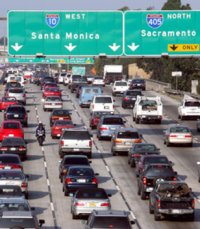 Feb. 12, is intended to attract a huge amount of additional money from states, localities, and private investors. The goal is to generate a total pot of $1.5 trillion to upgrade the country’s highways, airports, and railroads. Finding outside funding sources is essential to the policy changes moving forward, with non-federal government sources accounting for 70% of the formula for choosing infrastructure projects. Hawaii has taken steps toward adding new fees for electric vehicle owners, to get them to “pay their fair share” towards maintaining the state’s bridges and roads. Other states, including California, are likely to add more toll road fees as voters have turned down efforts to add other fees and funds coming from Washington are drying up; and some states are considering adding more EV taxes, similar to what Hawaii has been working on. President Trump has suggested adding federal gas taxes to raise more of the funds, but that’s been fading out in Congress. Republican legislators haven’t supported it, and want to gain support from voters as the mid-term election approaches. Adding a hefty gas tax may not go well with voters.
Feb. 12, is intended to attract a huge amount of additional money from states, localities, and private investors. The goal is to generate a total pot of $1.5 trillion to upgrade the country’s highways, airports, and railroads. Finding outside funding sources is essential to the policy changes moving forward, with non-federal government sources accounting for 70% of the formula for choosing infrastructure projects. Hawaii has taken steps toward adding new fees for electric vehicle owners, to get them to “pay their fair share” towards maintaining the state’s bridges and roads. Other states, including California, are likely to add more toll road fees as voters have turned down efforts to add other fees and funds coming from Washington are drying up; and some states are considering adding more EV taxes, similar to what Hawaii has been working on. President Trump has suggested adding federal gas taxes to raise more of the funds, but that’s been fading out in Congress. Republican legislators haven’t supported it, and want to gain support from voters as the mid-term election approaches. Adding a hefty gas tax may not go well with voters.

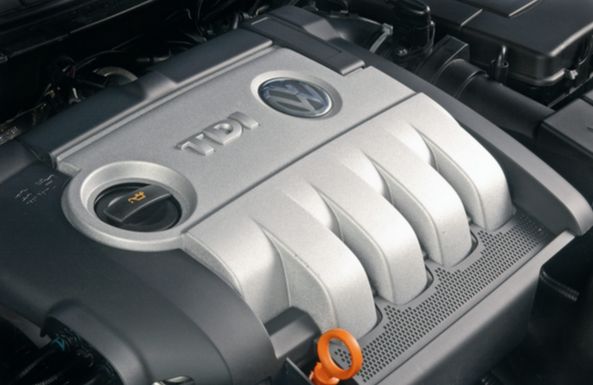 directed to the Environmental Mitigation Trust. That was spurred along in October with Wilmington Trust being named the VW settlement trustee, with several states expected to release their mitigation plans in the coming weeks and months. Fleets are in an excellent position to tap into funding sources for their upcoming clean vehicle initiatives.
directed to the Environmental Mitigation Trust. That was spurred along in October with Wilmington Trust being named the VW settlement trustee, with several states expected to release their mitigation plans in the coming weeks and months. Fleets are in an excellent position to tap into funding sources for their upcoming clean vehicle initiatives.  cars are no longer available. That’s taken place over the past couple of years after its parent company, Volkswagen, has emerged from the “dirty diesel” scandal. While VW has yet to be cleared (with news of air pollution tests on monkeys a few years ago hurting its image), it may be in better shape now that German competitor Daimler.
cars are no longer available. That’s taken place over the past couple of years after its parent company, Volkswagen, has emerged from the “dirty diesel” scandal. While VW has yet to be cleared (with news of air pollution tests on monkeys a few years ago hurting its image), it may be in better shape now that German competitor Daimler. 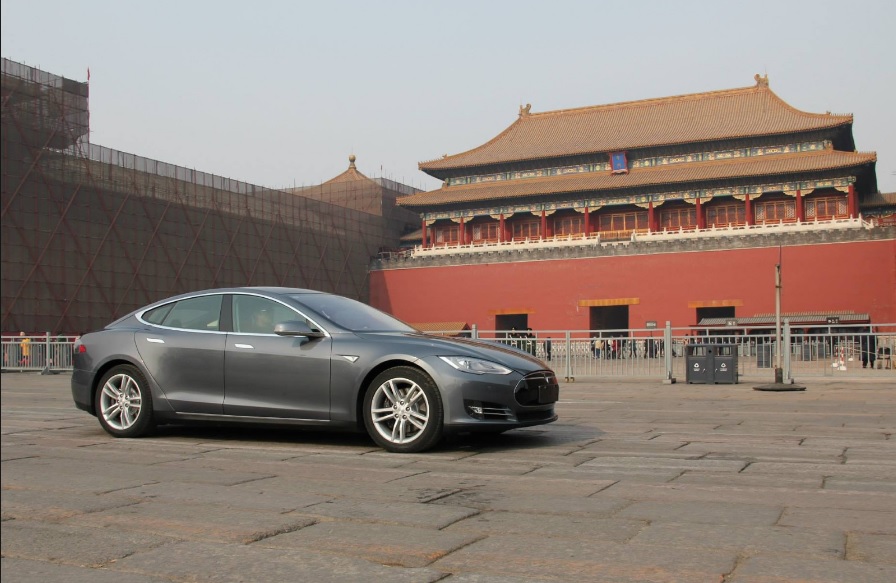 building an assembly plant in the Shangai area, but the two parties couldn’t reach an agreement on how the ownership structure would work. The national government wants it to be like all the others – a joint venture with local partners and Tesla wants to own the factory entirely. In October, Tesla had reached an agreement with the government in Shanghai to build a production facility in the city’s free-trade zone. Tesla would have been able to sidestep China’s steep tariffs by building a factory in the zone. Tesla has done well selling its electric cars in China, but an import tax of 25% raises the sticker price beyond what most consumers are willing to consider. A Tesla Model X made in the U.S. and shipped to China costs about 835,000 yuan ($132,000). Neither Tesla nor China responded to Bloomberg queries on the state of the potential agreement.
building an assembly plant in the Shangai area, but the two parties couldn’t reach an agreement on how the ownership structure would work. The national government wants it to be like all the others – a joint venture with local partners and Tesla wants to own the factory entirely. In October, Tesla had reached an agreement with the government in Shanghai to build a production facility in the city’s free-trade zone. Tesla would have been able to sidestep China’s steep tariffs by building a factory in the zone. Tesla has done well selling its electric cars in China, but an import tax of 25% raises the sticker price beyond what most consumers are willing to consider. A Tesla Model X made in the U.S. and shipped to China costs about 835,000 yuan ($132,000). Neither Tesla nor China responded to Bloomberg queries on the state of the potential agreement.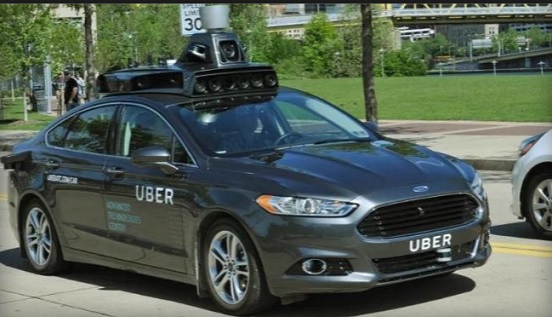 profitable business models and meet demands for real-world transportation. That would include doing it safely and addressing public concerns about how realistic self-driving cars would be to release on our roads.
profitable business models and meet demands for real-world transportation. That would include doing it safely and addressing public concerns about how realistic self-driving cars would be to release on our roads. Green Auto Market’s six year anniversary. The newsletter had started out prior as Green Automotive Digest with its Green Machine Digest blog. It became Green Auto Market in February 2012 with emphasis on the emerging business of clean vehicles, infrastructure, fuels and energy, advanced technologies, and the economic and political context behind all of it. It was monthly at that time, and went to weekly in June 2013 to a much longer list of readers. Special thanks to Editorial Advisory Board members for participating in monthly conference calls in recent years, especially Craig Shields, 2GreenEnergy; Peter Ward, Alternative Fuels Advocates, LLC; Joe Stergios and Greg Tabak, Enterprise Holdings; and Michael Taylor, Propane Education & Research Council.
Green Auto Market’s six year anniversary. The newsletter had started out prior as Green Automotive Digest with its Green Machine Digest blog. It became Green Auto Market in February 2012 with emphasis on the emerging business of clean vehicles, infrastructure, fuels and energy, advanced technologies, and the economic and political context behind all of it. It was monthly at that time, and went to weekly in June 2013 to a much longer list of readers. Special thanks to Editorial Advisory Board members for participating in monthly conference calls in recent years, especially Craig Shields, 2GreenEnergy; Peter Ward, Alternative Fuels Advocates, LLC; Joe Stergios and Greg Tabak, Enterprise Holdings; and Michael Taylor, Propane Education & Research Council.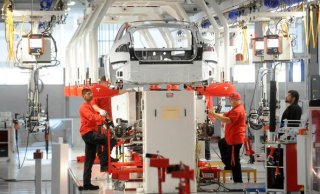 $619.4 million, or $3.70 per share, in the previous quarter but it was smaller than analysts had expected. Revenue was higher than expected at $3.29 billion in Q4, a nearly 10% increase from Q3 of last year. The company is taking a positive outlook for 2018, with the planned ramp of both the Model 3 and its energy storage products that should drive a revenue growth rate much higher than last year’s rate. The company’s cash balance remained stable last quarter even with the Model 3 production increasing, and not at the level originally planned by Tesla.
$619.4 million, or $3.70 per share, in the previous quarter but it was smaller than analysts had expected. Revenue was higher than expected at $3.29 billion in Q4, a nearly 10% increase from Q3 of last year. The company is taking a positive outlook for 2018, with the planned ramp of both the Model 3 and its energy storage products that should drive a revenue growth rate much higher than last year’s rate. The company’s cash balance remained stable last quarter even with the Model 3 production increasing, and not at the level originally planned by Tesla. 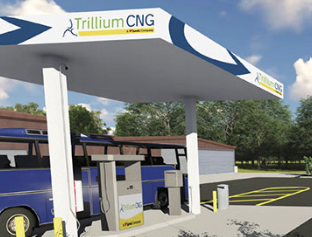 and microgram design and construction. The first hydrogen station will supply fuel cell buses starting this summer for the Orange County Transportation Authority’s (OCTA) Santa Ana, Calif., facility. Transit buses will be able to tap into 35 kilograms of hydrogen per bus in 6 to 10 minutes simultaneously from two fueling lanes. The station will be able to fuel the current 10 fuel cell buses and can go up to 50 buses. Infrastructure will be added to OCTA’s existing CNG fueling lanes. The current CNG station was designed and built by
and microgram design and construction. The first hydrogen station will supply fuel cell buses starting this summer for the Orange County Transportation Authority’s (OCTA) Santa Ana, Calif., facility. Transit buses will be able to tap into 35 kilograms of hydrogen per bus in 6 to 10 minutes simultaneously from two fueling lanes. The station will be able to fuel the current 10 fuel cell buses and can go up to 50 buses. Infrastructure will be added to OCTA’s existing CNG fueling lanes. The current CNG station was designed and built by 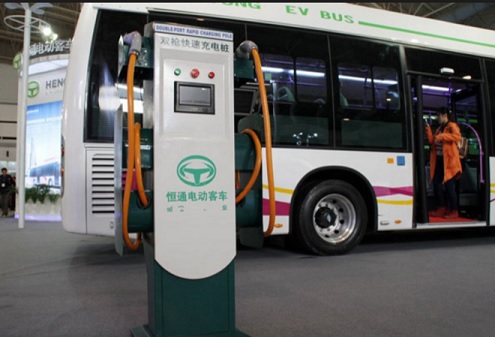 Bloomberg New Energy Finance. That will mean last year’s 386,000 units sold will go up to 1.2 million in the next seven years. Strong domestic support and aggressive city-level targets will mean China accounts for 99% of the world’s battery-powered buses by 2025, the report said. Last year’s electric bus sales dropped from 115,700 sold in China in 2016 to 89,546 last year due to policy changes and incentives being cut back during that time. This year will see changes as policy from national and local/city governments start to collide,
Bloomberg New Energy Finance. That will mean last year’s 386,000 units sold will go up to 1.2 million in the next seven years. Strong domestic support and aggressive city-level targets will mean China accounts for 99% of the world’s battery-powered buses by 2025, the report said. Last year’s electric bus sales dropped from 115,700 sold in China in 2016 to 89,546 last year due to policy changes and incentives being cut back during that time. This year will see changes as policy from national and local/city governments start to collide,  consumers and fleets make sound purchase decisions. One of these will be taking place February 10-19 during the 2018 Chicago Auto Show, where attendees will have the chance to test drive vehicles such as the all-new 2018 Nissan Leaf, 2018 Chrysler Pacifica Hybrid, and 2018 Mitsubishi Outlander PHEV. Chicago Area Clean Cities Coalition is hosting the test drives in partnership with the Midwest EVOLVE program. The American Lung Association is a key sponsor to Midwest EVOLVE. The Clean Cities partners include Twin Cities Clean Cities Coalition, Chicago Area Clean Cities, Clean Fuels Ohio, Earth Day Coalition, Greater Lansing Area Clean Cities, North Dakota Clean Cities, South Shore Clean Cities, and Wisconsin Clean Cities.
consumers and fleets make sound purchase decisions. One of these will be taking place February 10-19 during the 2018 Chicago Auto Show, where attendees will have the chance to test drive vehicles such as the all-new 2018 Nissan Leaf, 2018 Chrysler Pacifica Hybrid, and 2018 Mitsubishi Outlander PHEV. Chicago Area Clean Cities Coalition is hosting the test drives in partnership with the Midwest EVOLVE program. The American Lung Association is a key sponsor to Midwest EVOLVE. The Clean Cities partners include Twin Cities Clean Cities Coalition, Chicago Area Clean Cities, Clean Fuels Ohio, Earth Day Coalition, Greater Lansing Area Clean Cities, North Dakota Clean Cities, South Shore Clean Cities, and Wisconsin Clean Cities. year. The 1,875 sales total for the Model 3 for January
year. The 1,875 sales total for the Model 3 for January  from $2.490 a month ago. Diesel is at $2.998, up from $2.509 a year ago and $2.893 a month ago. As for the price of a barrel of oil, West Texas Intermediate (WTI) crude oil has gone up from $53.01 on Feb. 6, 2017 to $64.73 today.
from $2.490 a month ago. Diesel is at $2.998, up from $2.509 a year ago and $2.893 a month ago. As for the price of a barrel of oil, West Texas Intermediate (WTI) crude oil has gone up from $53.01 on Feb. 6, 2017 to $64.73 today. Green Score of 64. Winners of the award issued annually by the American Council for an Energy-Efficient Economy (ACEEE) earn a high Green Score rating based on an environmental damage index (EDX). The index estimates pollution from vehicle manufacturing, the production and distribution of fuel, and vehicle tailpipes. ACEEE found that what makes this year’s award winner and others on the top ranking stand out is affordable, efficient, tech-smart vehicles that are now on the market, offering consumers plenty of options for buying a greener vehicle. The Ioniq was acknowledged for bringing high efficiency in a practical size. The Mercedes-Benz Smart Fortwo Electric Drive, BMW i3, Kia Soul Electric, Ford Focus Electric, and Honda Clarity also took places among the greenest vehicles on the market. ACEEE also issued the Meanest List leaning toward large SUVs, loaded pickup trucks, heavier medium-duty vehicles, and European luxury cars that are the least friendly to the environment. The Mercedes Benz G550 took the lowest score of 19.
Green Score of 64. Winners of the award issued annually by the American Council for an Energy-Efficient Economy (ACEEE) earn a high Green Score rating based on an environmental damage index (EDX). The index estimates pollution from vehicle manufacturing, the production and distribution of fuel, and vehicle tailpipes. ACEEE found that what makes this year’s award winner and others on the top ranking stand out is affordable, efficient, tech-smart vehicles that are now on the market, offering consumers plenty of options for buying a greener vehicle. The Ioniq was acknowledged for bringing high efficiency in a practical size. The Mercedes-Benz Smart Fortwo Electric Drive, BMW i3, Kia Soul Electric, Ford Focus Electric, and Honda Clarity also took places among the greenest vehicles on the market. ACEEE also issued the Meanest List leaning toward large SUVs, loaded pickup trucks, heavier medium-duty vehicles, and European luxury cars that are the least friendly to the environment. The Mercedes Benz G550 took the lowest score of 19.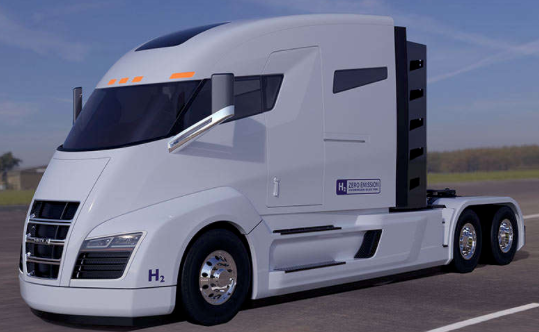 plans to build
plans to build